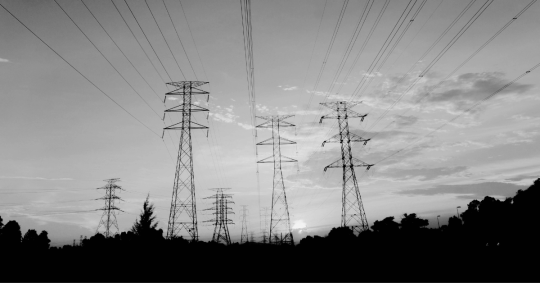Top Power Transmission Components for Construction Equipment

Power transmission components are the unsung heroes of construction equipment. They don’t always get the spotlight, but without them, no machine could dig, lift or haul. These components are responsible for transferring power from the engine to the working parts of your machine, ensuring smooth, controlled, and efficient movement across a range of terrains and tasks.
If you're managing a fleet or maintaining plant equipment, knowing the main players in your power transmission system is essential. It helps you stay on top of maintenance schedules, spot issues early and make informed choices when replacements are needed. Here’s a breakdown of the top power transmission components you’ll typically find in construction equipment and what you need to know about each one.
1. Gearboxes
Gearboxes are central to the transmission system. They adjust the engine’s output to provide the right torque and speed for the job at hand. In construction equipment, gearboxes have to cope with high loads and tough conditions, whether it's a wheel loader pushing material or a crane lifting a heavy load.
There are various types, including helical, planetary and bevel gearboxes, each suited to different roles and machine configurations. Regular inspections are essential. Look out for oil leaks, unusual noise or overheating - all common signs that internal wear or misalignment may be occurring.
2. Drive Shafts
Drive shafts transfer rotational power from the gearbox to the axles or other driven components. They’re often exposed to dust, debris and mechanical shock, so durability is key. Construction equipment typically uses robust, heavy-duty drive shafts with protective boots and grease points to handle extreme conditions.
It’s worth checking for signs of wear around the universal joints or CV joints. Vibration during operation or clunking sounds on start-up are typical indicators of a problem. A damaged drive shaft can lead to bigger failures down the line if it’s left unchecked.
3. Clutches and Couplings
These components connect and disconnect parts of the drivetrain, allowing machines to start smoothly, shift loads or reduce power delivery when necessary. Clutches are common in manual and semi-automatic transmissions, while couplings help absorb shock and compensate for misalignment between components.
On construction equipment, you’ll often find wet clutches that are cooled by oil for better heat management. They still wear out over time, particularly in high-load applications like bulldozers or excavators. Delayed response, overheating or slippage during operation are common signs of clutch problems.
4. Hydraulic Pumps and Motors
Although technically part of the hydraulic system, these components play a key role in transmitting power in modern construction equipment. Many machines now use hydrostatic transmissions, especially for variable-speed applications. These rely on hydraulic pumps and motors to convert engine power into controlled movement.
Though highly efficient, hydraulic components are sensitive to contamination. Dirty fluid is one of the quickest ways to cause failure, so stick to recommended maintenance intervals, change filters regularly and always use clean, quality oil. Reduced power, whining from the pump or erratic movement can be early warning signs of trouble.
5. Final Drives
Final drives reduce speed while increasing torque before power reaches the wheels or tracks. They’re especially important in tracked machines like excavators and bulldozers. Most final drives are made up of a planetary gearbox and a hydraulic or electric motor.
Because they’re located close to the working surface, final drives are exposed to impact and ingress. Look for oil leaks, metal shavings in oil samples or grinding sounds. These are all early signs that gears or bearings may be wearing out. Rebuilding or replacing a final drive is a significant job, so early detection makes all the difference.
6. Bearings and Seals
Although small, these components are vital for reducing friction and protecting other parts of the system. Seals keep contaminants out and lubricants in; however, bearings support rotational movements.
If bearings get worn, they can cause increased wear and excessive vibration on other components and reduce the system's efficiency. Seals, if compromised, can lead to fluid loss and contamination. Both should be inspected routinely, particularly during scheduled servicing or downtime.
Why This Matters
In construction, downtime is expensive. Whether you’re working on a tight project schedule or trying to keep equipment rental costs under control, keeping your power transmission system in good working order is a priority.
Understanding these components, how they work, what they’re responsible for and how to spot problems, gives you a practical edge. It means you can work more proactively with your maintenance teams, specify better replacement parts and reduce the risk of unexpected breakdowns.
Need Advice or Replacement Parts?
At Robert Cupitt, we supply a wide range of power transmission components for construction equipment, from gearboxes and drives to seals and couplings. If you're unsure about a fault, need a quick replacement or want to upgrade your components for better performance, get in touch. Our team has decades of experience in heavy-duty applications and can help you find the right solution fast.
Need help finding the right solution?
Our experienced team is here to provide expert advice and help you choose the perfect component for your application. Contact us today to discuss your requirements.